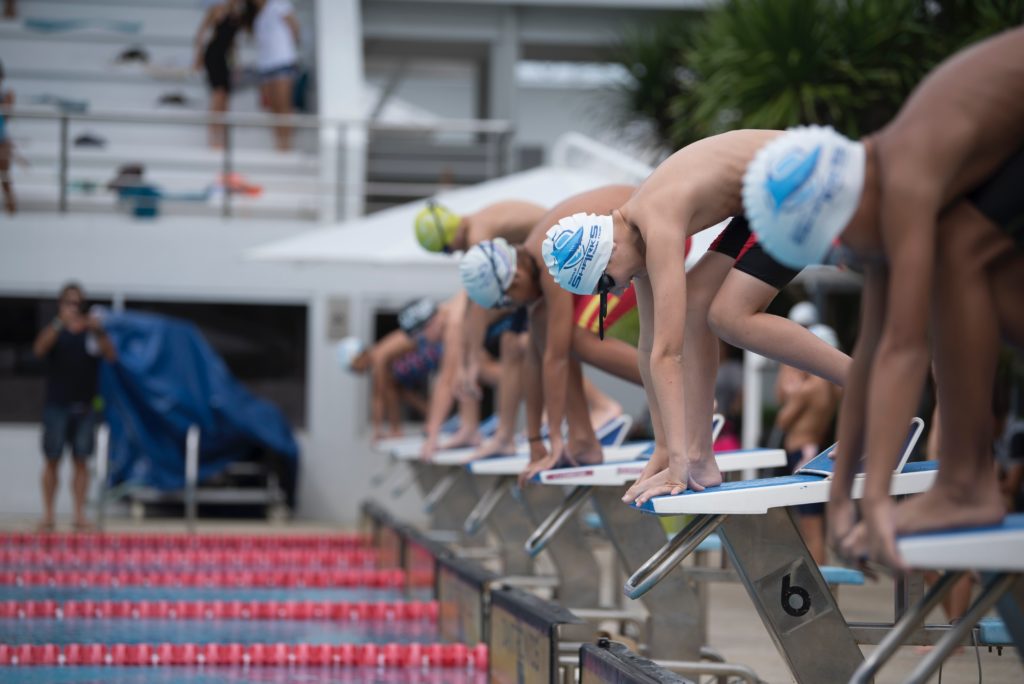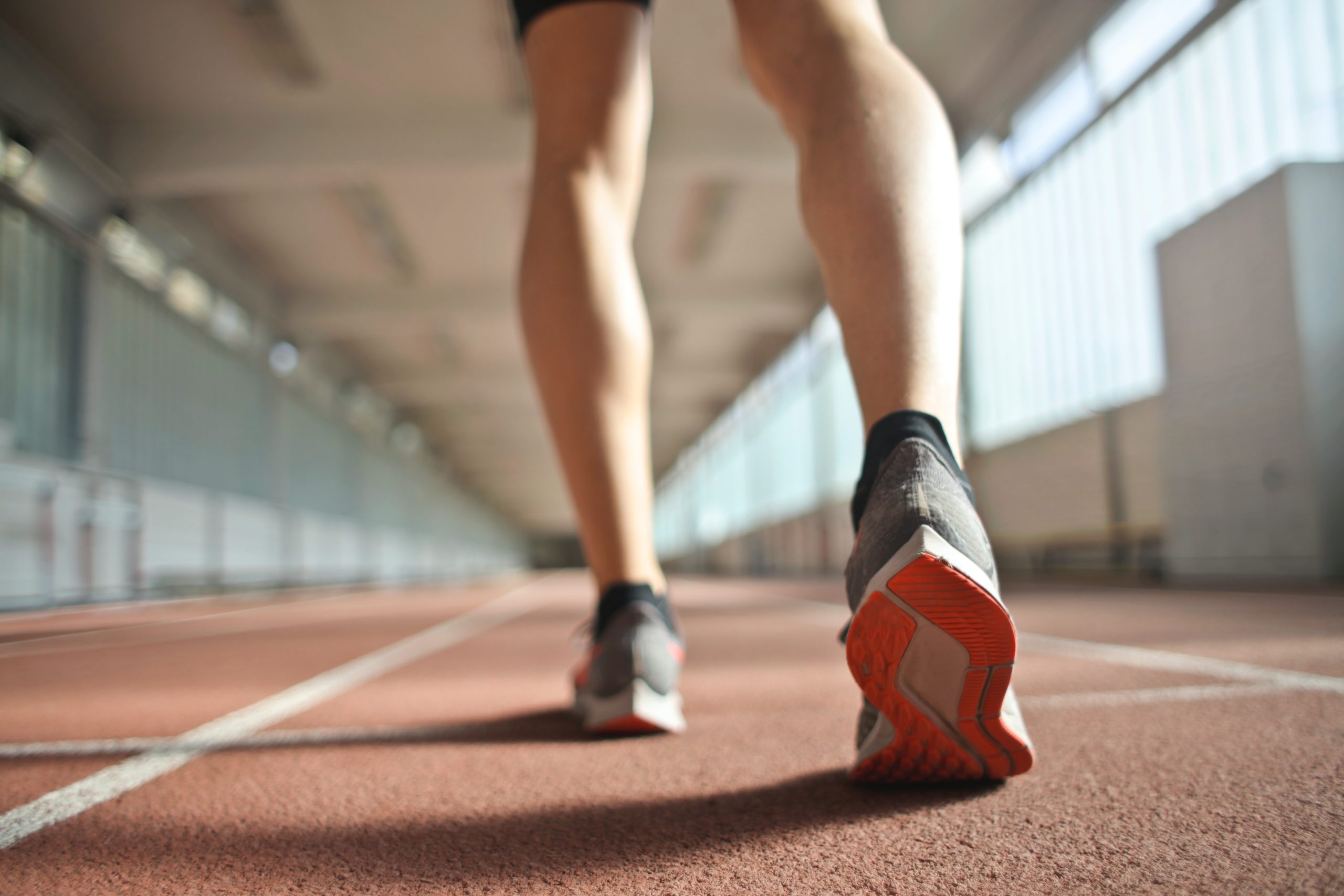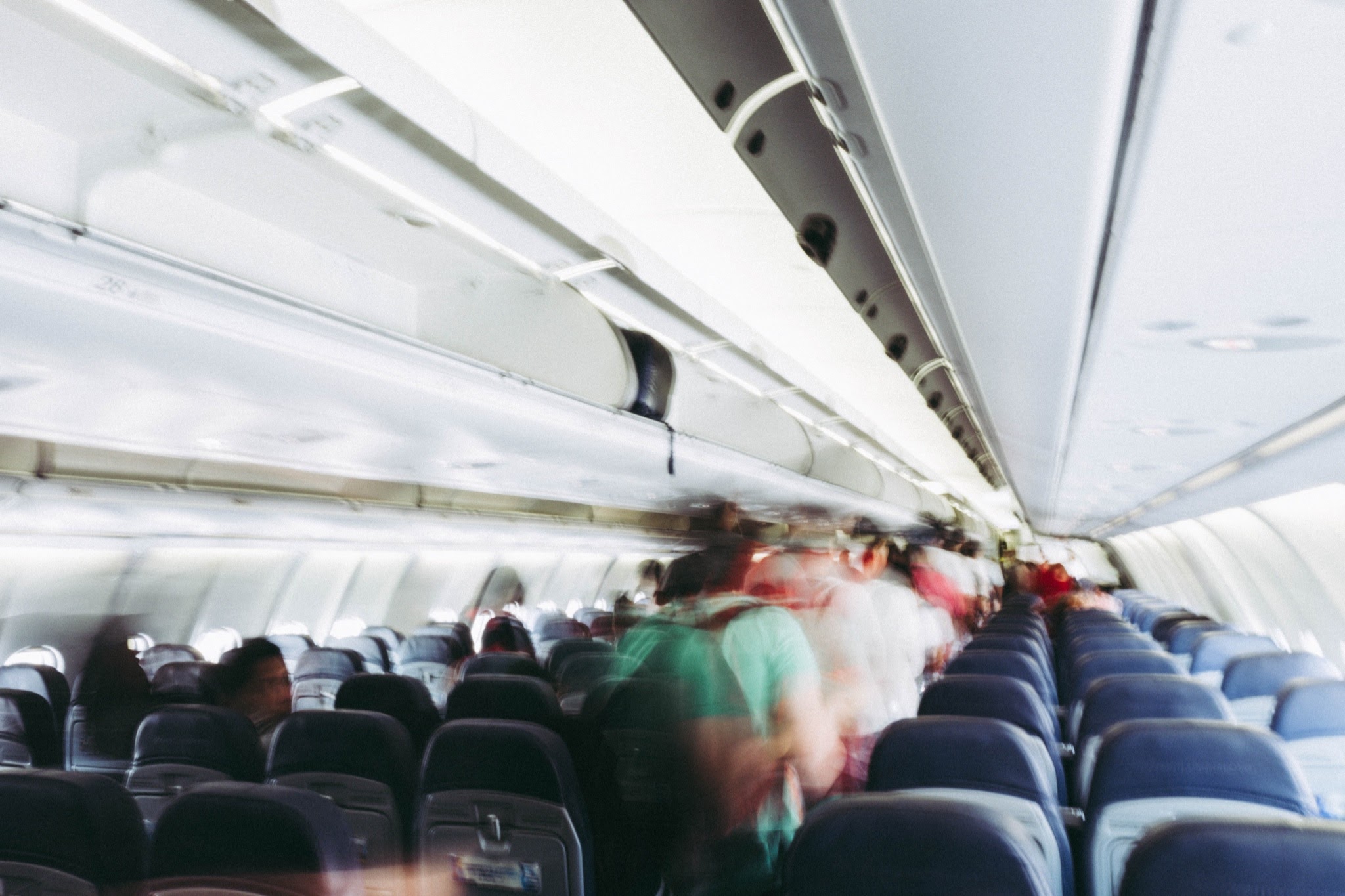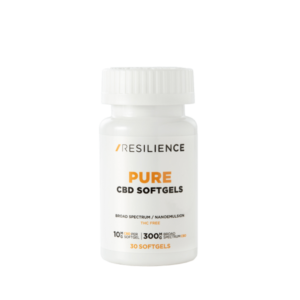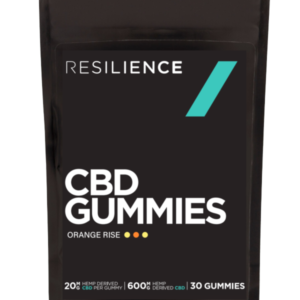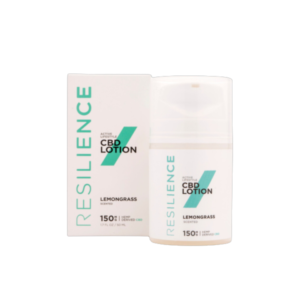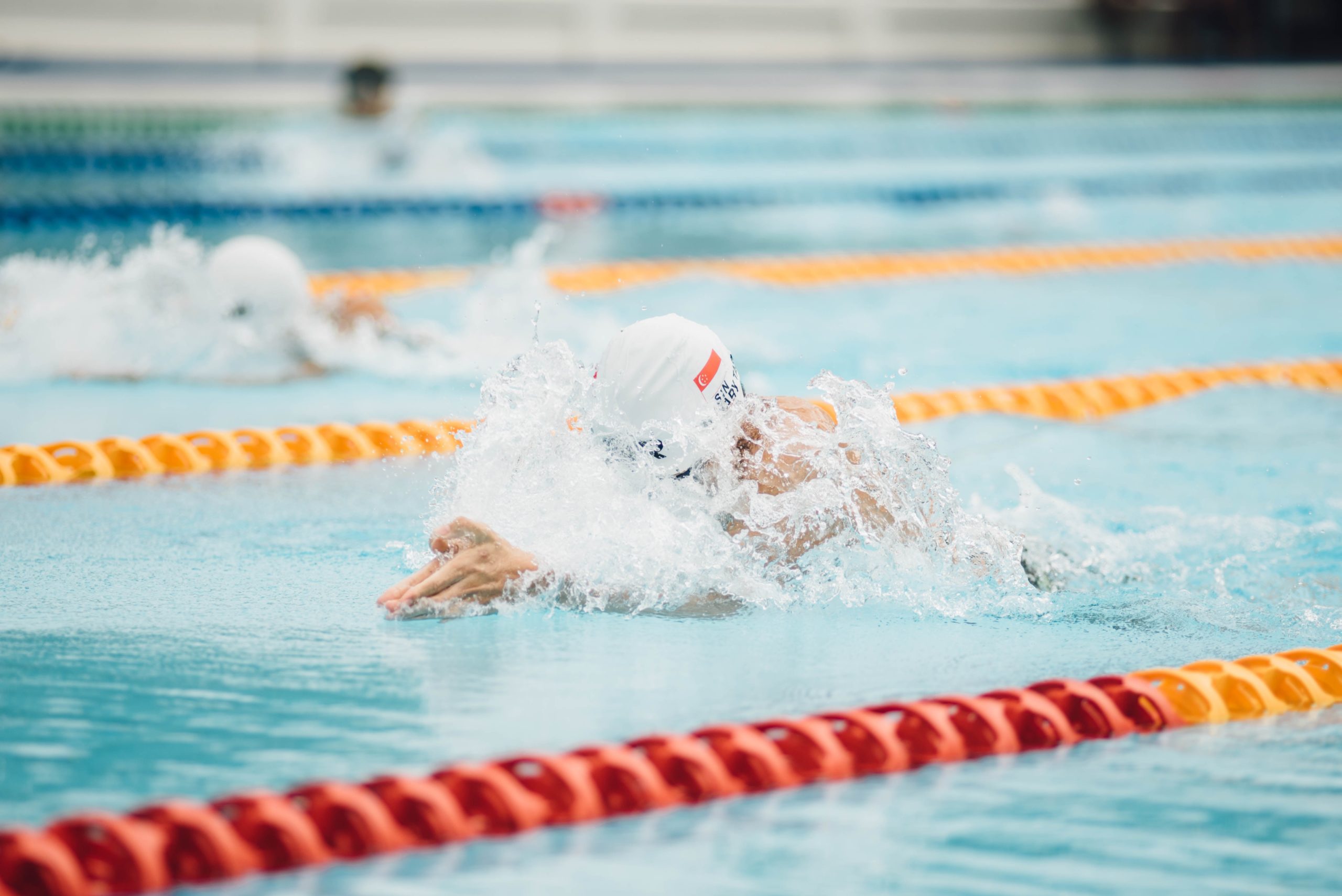
Few workouts are better for your muscles and cardiovascular health than swimming. It’s a low-impact exercise, which means your joints and various muscle groups take less of a beating than compared to, say, long-distance running.
With that said, training for a long swim isn’t easy. When you push your body’s limits, you’ll usually feel it the next day. And with swimming, the lactic acid build-up is a constant issue that you have to learn to manage.
When you wake up with sore muscles from swimming, it can sap your motivation to throw on your swimsuit and hop in the pool for another 1,500-meter swim. But if you want to reach your goals, you need to find a way to push through the discomfort after each training session. For this, your post-workout recovery routine can make all the difference in the world.
Key Takeaways:
- Swimming recovery is every bit as important as the swim itself.
- Swimmers must be intentional with every aspect of their training program.
- CBD can help supercharge recovery for swimmers, helping with anything from soreness to obtaining a full night’s rest.
Tip #1 – Warm-Up and Cool Down
If you’ve ever been on a swim team, you probably already have this step down. However, if you’re new to the sport and you’re trying to incorporate swimming into your daily exercise routine, this may be news to you.
Swimming at high intensities—especially with interval training—can cause a host of metabolites to build up in the muscles, including:
- Lactate
- Inorganic phosphate
- ADP
- Hydrogen ions
When these congregate, it can cause muscle fatigue, which may hinder future performance or prevent you from taking on another set.
Warm-Ups
Before you ever hop into the water, you should stimulate your muscles with an easy warm-up. The best way to do this is via dynamic stretches, which prepare your body for an additional workload, loosens up the joints, and allows various muscle groups to work harder and longer.
Common exercises for swimmers include:
- Jumping jacks
- Butt kicks
- Trunk rotation
- Skipping
- Arm circles
- High knee kicks
- Forward lunges
- Lunge and stretch
- Backbend
Cool Downs
After an intense training session or a race, you need to engage in cool down, which is sometimes referred to as active recovery. Cool downs help you naturally work out lactate from your muscles.
The intensity of your cool down will impact how quickly and effectively it gets used up. If the cool down session is too intense, it may actually produce even more lactate than would naturally occur with a passive recovery.
The type of swimming you do will impact your cool down needs. For example, if you perform sprints, that type of swimming relies much more heavily on your fast-twitch muscles compared to long-distance swimming. Because of this, it takes sprinters longer to remove/utilize that lactate. Therefore, according to USA Swimming, the intensity and duration of your cool down will be contingent on the type of swim you perform:
- Sprinter (50-100 yards) – Swim cool-down laps for 25 minutes at an easy 120-130 BPM.
- Middle distance (200-500 yards) – Swim cool-down laps for 20 minutes at an easy to moderate 130-140 BPM.
- Distance (500+ yards) – Swim cool-down laps for 10-15 minutes at a moderate 140-150 BPM.
If you don’t have a recovery pool available, you can perform active recovery on land via a light jog or hopping onto an exercise bike.
Tip #2 – Take CBD to Help with Delayed-Onset Muscle Soreness (DOMS)
How sore you feel the day after a swim depends on several factors tied to your fitness levels. Typically, muscle soreness occurs within 24 to 48 hours after a hard swimming session. Yet, how sore you feel may be contingent upon:
- How new your body is to the workout
- How hard you worked out
- How long you worked out
- Your age
- Your body weight
In many cases, what causes sore muscles is typically tied to a condition known as delayed-onset muscle soreness (DOMS), which according to Swimming World Magazine:
Unlike the acute type, DOMS is owed to very small tears in muscle fibers, to which the body produces inflammation to combat this more intense pain. Swimmers are susceptible to DOMS, as eccentric exercise, when muscles stiffen and elongate simultaneously, is the prevalent source. Eccentric exercise is exactly what swimming is.
Many swimmers are starting to rely on CBD as a pre-workout and post-workout recovery tool to combat DOMS. CBD can help support natural cannabinoid production and offer relief to sore muscles both directly and indirectly:
- Directly – Rub a topical CBD balm or lotion into the sore joints and muscles after a swim is finished. The CBD provides direct relief to the problem areas, especially when combined with other natural ingredients like eucalyptus and menthol.
- Indirectly – Take CBD orally to relieve discomforts occurring throughout the entire body. Additionally, an oral application can cause a host of side benefits like an energy boost and relief from stress.
Tip #3 – Focus on Hydration
When you’re in the water, it’s easy to forget that you still need water in you. You’re still sweating while you swim, even if it doesn’t feel like it. Therefore, you’ll be just as dehydrated after a long swim as a long run.
To that end, water helps the body transport red blood cells throughout our physiological systems and form both protein and glycogen—all of which are essential for muscle growth and recovery.
When your body is adequately hydrated, you can optimize your metabolic efficiency. In other words, your body has easier access to the nutrients it needs to function correctly. However, when you’re dehydrated, it can cause a host of issues, including:
- Cramping
- Early-onset fatigue
- Poorer lap times
- Increased risk of injury
While adults are supposed to drink 2 to 4 liters of water a day, swimming causes you to lose more fluids than other activities. Therefore, swimmers should drink at least 16fl oz of water within 2 hours of their swimming workout and then replenish those fluids afterward during the recovery phase.
Tip #4 – Nutrition Matters
Swimming requires massive amounts of energy.
That’s true whether you’re a casual swimmer or an Olympian athlete. Naturally, the intensity of your swim session will impact energy burn, but still, all swimmers need to replenish their lost nutrients. For instance, Michael Phelps was reportedly wolfing down 8,000 to 12,000 calories a day to make up for his rigorous training regimen.
Now, you won’t need a diet that’s anything nearly as high—but you will need to eat more than usual. For many swimmers, the primary fuel source should be healthy, complex carbohydrates:
Carbohydrates should make up one half of a swimmer’s diet as it is the fuel swimmers need to get through that tough practice or meet. Carbs are stored as glycogen in the muscles and liver and is the fuel that our body uses throughout our day – especially during a workout.
Common foods with complex carbs include:
- Oatmeal
- Brown rice
- 100% whole wheat bread
- 100% whole wheat pasta
- Apples
- Bananas
- Blueberries
- Grapefruit
- Cantaloupe
For the best diet possible, pair complex carbs with healthy proteins like hummus, chicken, tuna, eggs, and nuts.
Tip #5 – Get Plenty of Sleep
While people naturally link increased training with higher fitness, the truth is that most of the body’s recovery efforts happen while at rest. During training, you may notice yourself swimming faster or further, but the body’s adaptation to those activities actually occurs during the recovery phase.
The metabolic rebuilding phase is the genesis of better performance. Sleep just so happens to be the best way to supercharge it. If you get too little sleep, it can cause several issues that will impact your swimming, including:
- Reducing glucose metabolism
- Increasing cortisol levels
- Impacting tissue repair and growth
- Compromising immune function
- Reducing protein break down
- Decreasing growth hormone release
Everyone recovers differently.
Some people may need seven hours of sleep, while others need nine. It’s helpful to keep a sleep journal, track your hours, and gauge your performance and feelings throughout the day. If needed, adjust accordingly.
This is yet another place where CBD can assist. Taking a single dose an hour before bed will help support deep and restful sleep. The CBD combined with natural somniferous ingredients—like melatonin—work together to ensure that you catch the Zzzzzzz’s your body needs to recover from a long swim.
Recovery Process: Ice, Heat, Rub
All this to say, if you’re feeling sore, a combination of heat therapy, cold therapy, and massage therapy work well together. Typically, this will occur in three phases:
- Heat – Heat treatment stimulates blood flow and helps tired muscles relax, especially if they’ve been performing eccentric movements.
- Cold – Cold treatment reduces inflammation by decreasing blood flow.
- Massage – A sports massage can stimulate blood circulation during recovery. It acts like your active recovery warm down by ridding the muscle tissue of lactic build-up and other metabolic wastes.
By rotating these three treatments, you can relieve muscle tension, help your body relax, and then fully recover.
Resilience CBD—Made for Swimmers
Swimming is an optimal, low-impact workout that can bolster your muscles and cardiovascular system. And if you want to keep pushing, your body will inevitably push back.
So, if you want to crush your goals, how you recover is just as important as how you work out. Whether it’s your cool-down swim or your diet, every adjustment contributes to the holistic process of mitigating swimming fatigue recovery.
For that, there’s Resilience CBD. Our premium, hemp-based CBD was built for swimmers and athletes to supercharge their recovery. Whether you want a CBD chewable or a CBD balm, all of our recovery products for athletes are third-party tested so that you know that you’re getting the best quality in the marketplace.
Ready to recover quicker and enhance your performance? Perfect. You’re in the right place.
 Written by: Michael Tatz | Linkedin
Written by: Michael Tatz | Linkedin
Michael Tatz is the Co-Founder of Resilience CBD, and a passionate leader in the health & fitness world helping others rise to and crush their wildest goals. A former Division 1 college wrestler, Army Officer, and investment manager at Goldman Sachs, he has pushed his body and mind to the limits on the mats, dressed in camo, and in the boardroom.
Today, he spends his time leading Resilience CBD to develop the absolute best recovery products for athletes everywhere. Resilience was founded after CBD personally impacted Michael’s life, and the brand was built to partner with everyday athletes in pursuit of conquering their most difficult challenges, rebounding after their toughest performances, and rising to their goals that once seemed impossible.
Sources
NCBI. Muscle fatigue: general understanding and treatment. https://www.ncbi.nlm.nih.gov/pmc/articles/PMC5668469/
Main Health Fitness. 10 Best Dynamic Stretches for Swimmers: Warm-up before a pool work-out. https://mainhealthfitness.com/10-of-the-best-dynamic-stretches-for-swimmers-to-try/
USA Swimming. Swimming and the Art of Recovery. https://swimming.org.nz/visageimages/Swimmers%20Resources/HPSNZ/art_of_recovery_from_us_swimming_(2).pdf
Swimming World Magazine. Soreness and Recovery Tips That Can Benefit the Body. https://www.swimmingworldmagazine.com/news/soreness-and-recovery-tips-that-can-benefit-the-body/#:~:text=Swimmers%20are%20susceptible%20to%20DOMS,around%20three%20to%20five%20days.
Business Insider. Here’s what Michael Phelps eats every day for the Rio Olympics. https://www.businessinsider.com/michael-phelps-diet-for-the-rio-olympics-2016-8
NCBI. Sleep in Elite Athletes and Nutritional Interventions to Enhance Sleep. https://www.ncbi.nlm.nih.gov/pmc/articles/PMC4008810/

